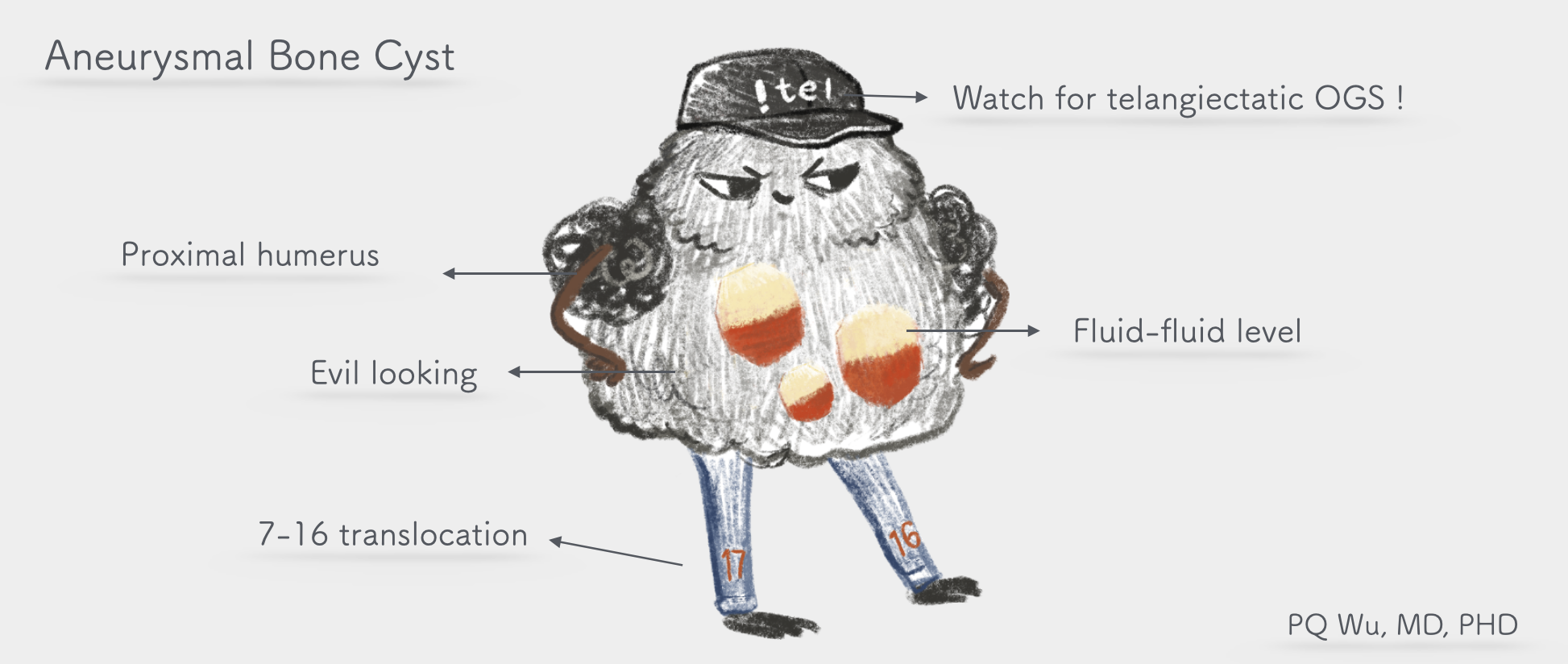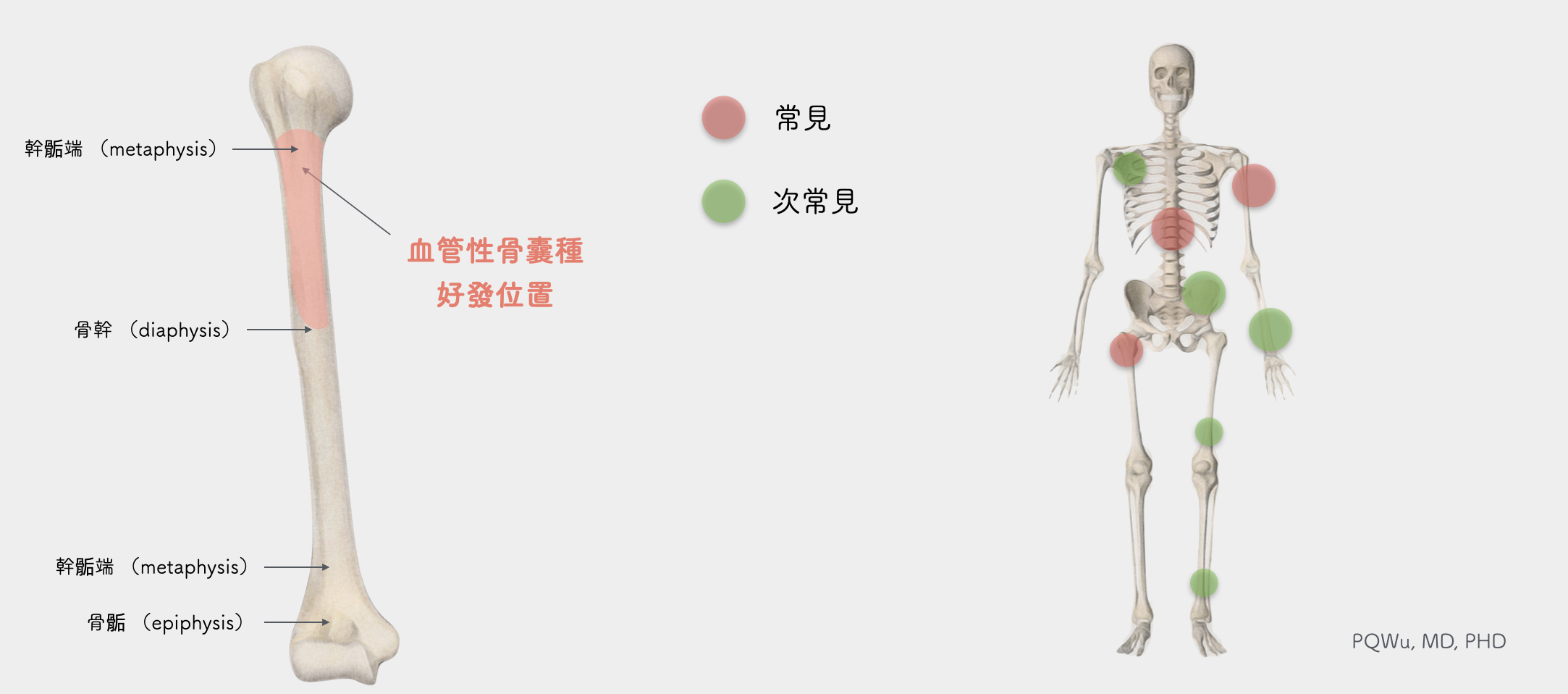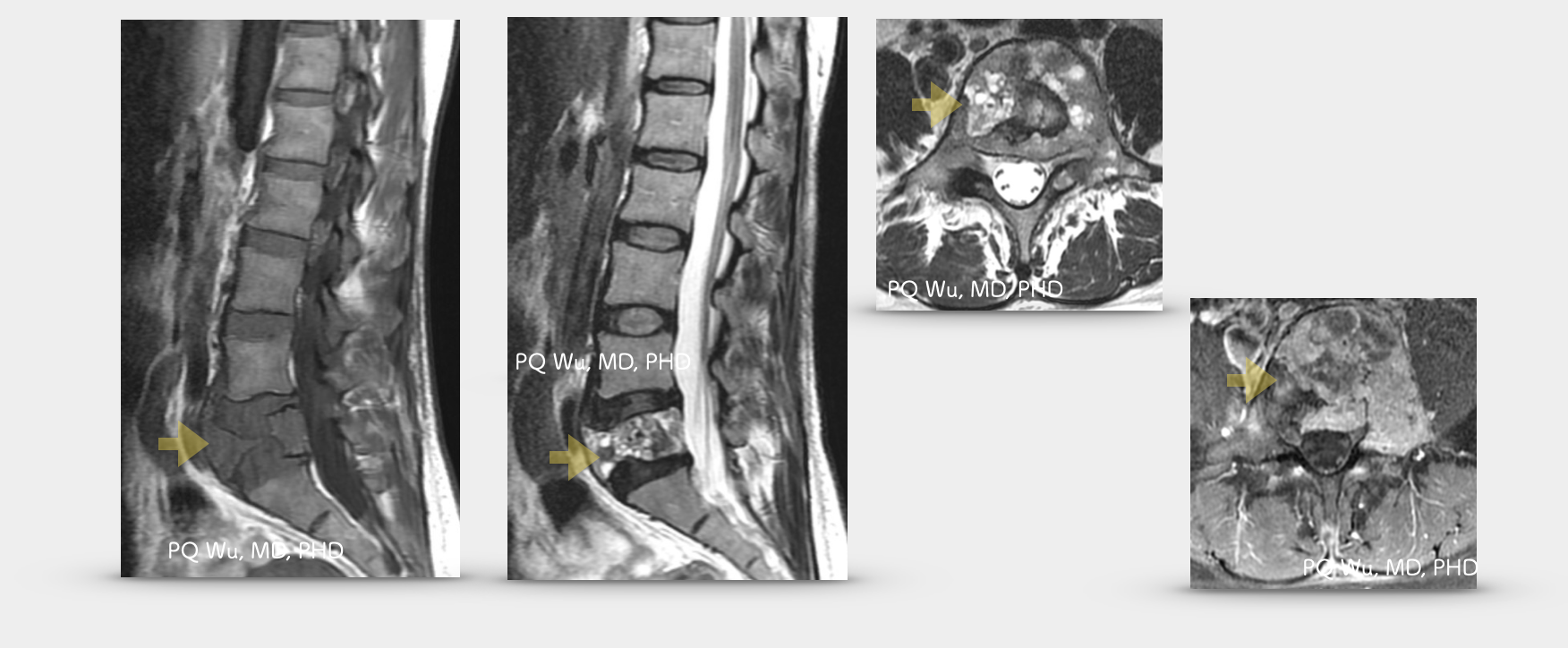
Aneurysmal bone cysts are relatively rare tumors. Although essentially a benign bone tumor, it damages the local bones largely and is easy to recur. What annoys the doctors is that aneurysmal bone cysts occur at the spine, bringing difficulties to surgery
More importantly, aneurysmal bone cysts are sometimes not easily distinguished from other benign or even malignant bone tumors (such as osteosarcoma). Hence, it commonly causes regrets from both doctors and patients because of the mistaken treatment!
Chinese: None
English: None
Since aneurysmal bone cysts can cause more serious bone damage, most patients have pain. If the tumor is large, the patient will feel the lump in the affected part. If symptoms persist for a while, muscle atrophy and limited joint movement can result from the fear of weight-bearing. In more severe cases, it can also cause pathological fractures
Aneurysmal bone cysts are occasional benign bone tumors, taking about 2.5 to 6 percent of bone tumors. Statistics report an average of 1.4 new cases per million people a year. Our outpatient clinic would discover approximately one new patient in about two to three months at the Therapeutical and Research Center of Musculoskeletal Tumor in Taipei Veterans General Hospital.
Aneurysmal bone cysts are more likely to occur in women, accounting for about 55%. Most of these occur in young people under the age of 20.

Aneurysmal bone cysts can occur in many bones, but they generally occur in the spine (16%), femur (15%), humerus (7%), and tibia (15%). If it occurs in the spine, it may cause the patient severe neurological damage due to the outward growth of the tumor that compresses the nerve.
Most bone tumors occur at the metaphysis, the same as the aneurysmal bone cysts. However, since aneurysmal bone cysts often extend to the diaphysis, it often invades both the metaphysis and the diaphysis.


Aneurysmal bone cysts at the spine
Under X-ray images, aneurysmal bone cysts will show a multicystic, osteolytic lesion that appears at one side in the bone at the epiphysis and the diaphysis. Because it grows more slowly, it usually does not destroy the cortical bone like a giant cell tumor, although it is highly capable of damaging bone structures. However, it does cause thinning of the cortical bone.
Since the cortical bones provide support for bone structure, aneurysmal bone cysts often cause pathological fractures, the same characteristic as simple bone cysts. Unlike simple bone cysts, where aneurysmal bone cysts are more active, a periosteal reaction can sometimes be seen in X-ray images. Meanwhile, part of the aneurysmal bone cysts will have another characteristic: when it grows slowly for a long time, the bone swells like a blowing bubble since the aneurysmal bone cysts expand the bone.

In addition, under the MRI examination, we can see a very typical liquid surface boundary (Fluid-fluid levels) in aneurysmal bone cysts. Since aneurysmal bone cysts have rich blood, when a patient lies flat for an MRI test, the blood that accumulates in the cavity is stratified by gravity (blood cells go down and serum go up), resulting in the so-called fluid-fluid levels.

When it goes to aneurysmal bone cysts during surgery, we will find a pile of blood outflow from the cyst, which we call "a bag of blood." In addition, many soft and rotten tissues are seen during surgical scraping (see figures below). Microscopic observations revealed considerable amounts of blood, in which some solid areas scattered. In these regions, many giant cells and mitotic fibroblasts can be seen.

Secondary
Transform from partial structures of other bone tumors
Primary
Due to genetic mutations, tumors grow in normal bones
Aneurysmal bone cysts can be divided into two main categories.The first category is secondary aneurysmal bone cysts, and the second category is primary aneurysmal bone cysts. Both of the aneurysmal bone cysts take half of the cases.
Secondary aneurysmal bone cysts are transformed from the 'partial structure' of other bone tumors. Namely, aneurysmal bone cysts will appear in a tumor. Common tumor cases include giant cell tumors, osteoblastoma, chondroblastoma, non-ossifying fibroma, and fibrous dysplasia.
On the contrary, primary aneurysmal bone cysts are not related to other tumors. They form themselves. The main cause of the formation of aneurysmal bone cysts is genetic variation. In 2004, a unique report co-published in the American Journal of Pathology by a number of well-known hospitals in the United States discovered the genetic mutation problem of aneurysmal bone cysts. The coworkers include Brigham and Women's Hospital, Boston; Mayo Clinic, Rochester; Children's Hospital Medical Center, Boston; Beth Israel Deaconess Medical Center; Massachusetts General Hospital; Bostonana-Farber Cancer Institute. I put the relative information together as follows:
-
血管性骨囊腫之基因變異,主要是發生在第十六對於第十七對染色體上。
-
第十六對染色體 q22位置上,為 CDH 11 基因。 -
CDH 11 基因的功能,主要與鈣離子相關之細胞黏附性、骨分化有關。 -
第十七對染色體 p13 的位置上,為 USP6 基因。 -
SP6 基因的功能非常多,主要包括細胞移動、轉變與發炎反應。 -
血管性骨囊腫,起因為第十六對於第十七對染色體發生基因轉位(translocation)
-
這個基因轉位的發生,產生了一種 CDH11-USP6 的融合基因 (CDH11-USP6 fusion gene)。 -
CDH11-USP6 融合基因會促進 MMP-9 與 VEGF 的表現。 -
MMP-9 與 VEGF 會造成 osteolysis, inflammation and vascularization。 -
因此造成血管性骨囊腫的發生。
Although an aneurysmal bone cyst has a low chance of turning malignant, the initial distinction between it and a malignant tumor is very difficult and will need special attention!
by PQ Wu
For primary aneurysmal bone cyst, the chances of turning malignant are quite low. The ods are about 1% in sporadic reports. However, malignancy could be induced when aneurysmal bone cyst patients receive radiation therapy. In 2005, two cases of turning aneurysmal bone cyst to osteosarcoma were reported by the Scott and White Memorial Hospital and Clinic in Texas (*). In 2015 at our center, we also treated a teenager who bears highly malignant osteosarcoma turned from an aneurysmal bone cyst. In the secondary aneurysmal bone cyst, it’s very likely to have a tumor with aneurysmal-bone-cyst change

I believe that a bone oncologist, when diagnosing ‘aneurysmal bone cysts,’ will feel uncertain and think about a terrible malignant tumor, telangiectatic osteosarcoma. These two tumors are fairly indistinguishable at the initial stage, whether under X-ray images, MRI images, or even biopsies! Many benign tumors are also not easy to distinguish between each other, yet the impact is not huge, and a surgical cleaning would be enough! However, once an aneurysmal bone cyst and telangiectatic osteosarcoma are misdiagnosed, the patient would likely lose a limb or even his/her life!
Whether at global bone tumor conferences or in the medical journal of bone tumors, these examples have also been reported quite a few times! So, in our Therapeutical and Research Center of Musculoskeletal Tumor at Taipei Veterans General Hospital, we’ll be very cautious when encountering a 'somewhat strange' aneurysmal bone cyst. Before entering the tumor during surgery, we will slice a small wound to take out the tumor specimen for frozen biopsy confirmation. After a correct confirmation, we’ll open the wound and continue the operation. However, even with such caution, misjudgments may occur.

Surgery for aneurysmal bone cysts is absolutely necessary! There are three steps, including intralesional curettage, post-surgical adjuvant therapy, and bone transplantation. I have a detailed description of these three steps in the following three articles, and the access links are as follows:
As mentioned earlier, aneurysmal bone cysts tend to occur in the spine and can cause nerve compression. Coupled with the fact that aneurysmal bone cysts are relatively easy-recurring tumors, physicians often feel helpless to treat aneurysmal bone cyst in the spine or pelvis. In 2013, Ohio State University Medical Center came up with an approach of injecting a very traditional drug- Doxycyclin, directly through the skin into the patient's aneurysmal bone cysts. They reported 20 patient experiences, with five of whom had aneurysmal bone cysts in the spine. Only one patient experienced tumor recurrence after an average of 38 months of tracking (at least 24 months)! Such a result was very inspiring since it was really hard to treat aneurysmal bone cysts that occur in the spine or pelvis in the past!
Moreover, what is the mechanism of using the Doxycyclin for aneurysmal bone cyst treatment? As mentioned earlier, the formation of aneurysmal bone cysts is driven by the gene translocation of the 16th and 17th pairs of chromosomes, resulting in the CDH11-USP6 fusion gene. This fusion gene promotes the function of MMP-9, leading to the occurrence of tumors. Therefore, the effect of Doxycyclin to eliminate tumors is that it inhibits the function of MMP-9.
It is quite a pity that this injection form of Doxycyclin is not available in Taiwan for some reason. Although it’s very cheap, it’s not purchasable in Taiwan! Therefore, patients with aneurysmal bone cysts in Taiwan currently have no chance to receive such treatment! It should prompt a reflection of our National Health Insurance system!


